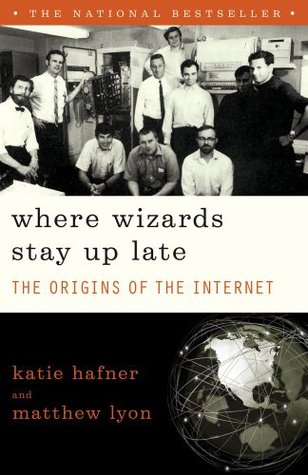More on this book
Community
Kindle Notes & Highlights
”Don’t you know, Mr. President?” replied one of the men with a smile. “All scientists are Democrats.” “I don’t believe it,” Eisenhower shot back. “But anyway, I like scientists for their science and not for their politics.”
Ruina brought a relaxed management style and decentralized structure to the agency. Details didn’t interest him; finding great talent did. He believed in picking the best people and letting them pick the best technology. He felt strongly about giving his program directors free rein. His job, as he saw it, was to build as much support and funding as he could for whatever projects they selected.
“the product of a superb architect and a sloppy workman.”
‘It doesn’t matter who gets the credit; it matters that it gets done.’”
He held to the view that computers would naturally continue to be used for what they do best: all of the rote work. And this would free humans to devote energy to making better decisions and developing clearer insights than they would be capable of without computers.
“The process of technological development is like building a cathedral,” remarked Baran years later. “Over the course of several hundred years new people come along and each lays down a block on top of the old foundations, each saying, ‘I built a cathedral.’ Next month another block is placed atop the previous one. Then comes along an historian who asks, ‘Well, who built the cathedral?’ Peter added some stones here, and Paul added a few more. If you are not careful, you can con yourself into believing that you did the most important part. But the reality is that each contribution has to follow
...more
The firm had also become well known as a place whose hiring philosophy was to recruit MIT dropouts. The idea was that if they could get into MIT they were smart, and if they dropped out, you could get them cheaper.
Jamming devices can destroy data from a single radar, but an array of radars can compensate if they are working in concert with a computer.
Risk assessment is essential in any engineering enterprise. Because no significant technological project can be entirely risk-free, the probabilities for success and failure of particular designs are factored and weighed. The potential for trouble falls into three categories: the foreseen, the unforeseen but foreseeable, and the unforeseeable. In the last case engineers are forced to make decisions with their fingers crossed.
“How can you tell when one problem is more interesting than another?” “It’s just experience,” Kahn’s colleague responded. “How does one get that?” Kahn inquired. “Find someone who has a lot of experience and go work with him.”
He believed that individual productivity and talent varied not by factors of two or three, but by factors of ten or a hundred.
Heart had a predilection for judging people not by their looks or manners or political views, but almost purely by how smart he believed them to be.
He looked for people who would be committed to a common mission rather than a personal agenda.
And while Heart tolerated idiosyncrasy, he shied away from egocentric “head cases,” no matter how smart they were.
Functionality mattered now, not elegance or beauty.
On his deathbed in 1969, Dwight Eisenhower asked a friend about “my scientists” and said they were “one of the few groups that I encountered in Washington who seemed to be there to help the country and not help themselves.”
Over the years he had seen too many programmers captivated by tool building, and he had spent a career holding young engineers back from doing things that might waste money or time.
technological advances often begin with attempts to do something familiar. Researchers build trust in new technology by demonstrating that we can use it to do things we understand. Once they’ve done that, the next steps begin to unfold, as people start to think even further ahead. As people assimilate change, the next generation of ideas is already evolving.
development. E-mail was to the ARPANET what the Louisiana Purchase was to the young United States.
”We’d get into this argumentative state, then step back and say, ‘Let’s find out what it is we’re actually arguing about.’
As milestones go, the transition to TCP/IP was perhaps the most important event that would take place in the development of the Internet for years to come. After TCP/IP was installed, the network could branch anywhere; the protocols made the transmission of data from one network to another a trivial task.
The ARPANET, and later the Internet, grew as much from the free availability of software and documentation as from anything else.
By virtue of its quiet momentum, TCP/IP had prevailed over the official OSI standard. Its success provided an object lesson in technology and how it advances. “Standards should be discovered, not decreed,” said one computer scientist in the TCP/IP faction. Seldom has it worked any other way.
“The project was an example of what can be accomplished quickly, with a really strong sophisticated leadership, adequate resources, and an avoidance of the many kinds of bureaucratic foolishness that can affect so many projects.”


